
Description
The World of Aromatherapy’s Ho Wood Essential Oil
🌳 Delve deep into the heart of ancient forests with The World of Aromatherapy’s Ho Wood Essential Oil, a symphony of nature’s most tranquil notes.
🍃 Extracted from the leaves and bark of the Ho tree, this oil envelops you in a gentle aroma, a harmonious blend of floral and woody undertones that evoke the serenity of untouched woodlands.
💆 Celebrated for its calming properties, Ho Wood Oil is a sought-after elixir in aromatherapy, perfect for grounding the spirit and soothing the mind.
🌍 With our hallmark commitment to sustainability, every drop housed in our elegantly designed bottle echoes our reverence for Mother Nature’s treasures.
🌟 Embrace the peace and balance that our Ho Wood Essential Oil offers, and let its delicate embrace reconnect you with the earth’s eternal rhythms.
Latin Name : Cinnamomum Camphora Var. Glavescens
Part Of Plant Used : Wood
Source : China
Extraction Method : Steam Distillation
Additional information
| Weight | 0.04 kg |
|---|---|
| Size | 10ml, 50ml, 500ml |
You must be logged in to post a review.
Related Products
Related products
-
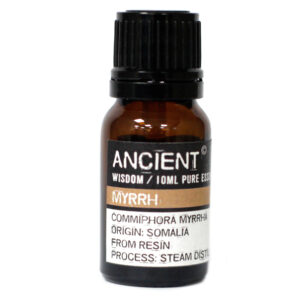
Myrrh Essential Oil
£22.95 – £675.00Price range: £22.95 through £675.00 Select options This product has multiple variants. The options may be chosen on the product page -
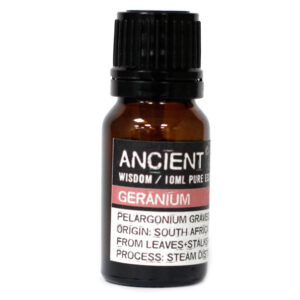
Geranium Essential Oil
£6.75 – £199.95Price range: £6.75 through £199.95 Select options This product has multiple variants. The options may be chosen on the product page -
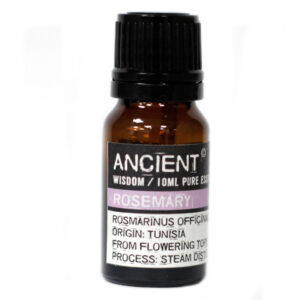
Rosemary Essential Oil
£4.00 – £75.00Price range: £4.00 through £75.00 Select options This product has multiple variants. The options may be chosen on the product page -
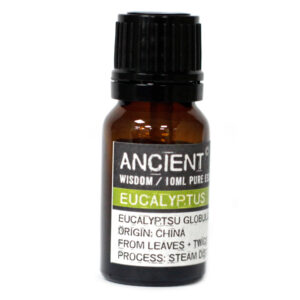
Eucalyptus Essential Oil
£4.25 – £59.95Price range: £4.25 through £59.95 Select options This product has multiple variants. The options may be chosen on the product page
Ho Wood Essential Oil: Benefits and Uses in Aromatherapy
Ho Wood Essential Oil from The World of Aromatherapy
Ho Wood Essential Oil is a popular choice among aromatherapists and essential oil enthusiasts. It is derived from the bark and wood of the Cinnamomum camphora var linalool tree, which is native to East Asia. The oil is known for its sweet, woody, and floral aroma, making it a favourite in perfumery and skincare products.
Ho Wood Essential Oil is a versatile oil that possesses a range of therapeutic properties. It is widely used in aromatherapy to promote relaxation, reduce stress, and improve sleep quality. The oil is also known for its antiseptic, anti-inflammatory, and analgesic properties, making it a useful tool for treating skin conditions, respiratory issues, and muscle pain.
Key Takeaways
- Ho Wood Essential Oil is derived from the bark and wood of the Cinnamomum camphora var linalool tree, native to East Asia.
- The oil possesses therapeutic properties that make it useful for promoting relaxation, reducing stress, and treating skin conditions, respiratory issues, and muscle pain.
- Ho Wood Essential Oil is a versatile oil that is commonly used in aromatherapy, perfumery, and skincare products.
Ho Wood Essential Oil: An Overview
Ho Wood Essential Oil is derived from the bark of the Ho Wood tree, scientifically known as Cinnamomum camphora, which belongs to the Lauraceae family. The oil is obtained through the steam distillation process of the tree’s bark and twigs. The oil has a sweet, floral, and woody aroma, which is similar to that of Rosewood Essential Oil.
The main component of Ho Wood Essential Oil is Linalool, which is a naturally occurring terpene alcohol that gives the oil its characteristic aroma. Linalool is also found in other essential oils such as Lavender and Bergamot.
Ho Wood Essential Oil is known for its calming and soothing properties. It is commonly used in aromatherapy to promote relaxation and reduce stress and anxiety. The oil is also known for its anti-inflammatory, anti-bacterial, and anti-fungal properties.
Ho Wood Essential Oil is often used in skincare products due to its ability to soothe and moisturize the skin. It is also used in perfumes and fragrances for its sweet and woodsy aroma.
It is important to note that Ho Wood Essential Oil should not be confused with Ho Leaf Oil, which is derived from the leaves of the same tree. Ho Leaf Oil has a higher concentration of camphor and is known for its strong camphoraceous aroma.
Overall, Ho Wood Essential Oil is a versatile and beneficial essential oil that can be used for a variety of purposes. Its sweet and floral aroma, combined with its therapeutic properties, make it a popular choice in aromatherapy and skincare products.
Extraction and Composition
Ho Wood Essential Oil is extracted from the wood, bark, twigs, and sometimes leaves of the Ho tree, scientifically known as Cinnamomum camphora var. linalool. The oil is extracted through steam distillation, a process that uses steam to extract the essential oil from the plant material.
The chemical composition of Ho Wood Essential Oil is primarily made up of linalool, a terpene alcohol that gives the oil its unique aroma. The oil also contains other terpenes such as camphor, geraniol, and alpha-terpineol. The exact composition of the oil can vary depending on the chemotype of the Ho tree and the extraction method used.
Steam distillation is the most common method used to extract Ho Wood Essential Oil. In this method, steam is passed through the plant material, which causes the essential oil to vaporize. The vapor is then condensed and collected, resulting in the final product.
Other methods used for extracting essential oils include solvent extraction, supercritical fluid extraction, and microwave-assisted extraction. However, steam distillation remains the preferred method for extracting Ho Wood Essential Oil due to its efficiency and ability to preserve the oil’s chemical composition.
In conclusion, Ho Wood Essential Oil is primarily extracted through steam distillation from the wood, bark, twigs, and sometimes leaves of the Ho tree. The chemical composition of the oil is primarily made up of linalool, with other terpenes present in smaller amounts. Steam distillation is the most common and preferred method used for extracting the oil due to its efficiency and ability to preserve the oil’s chemical composition.
Therapeutic Properties
Ho Wood Essential Oil has a wide range of therapeutic properties that make it a popular choice in aromatherapy. The oil has a sweet, woody scent and is known for its calming and relaxing effects on the mind and body.
Some of the therapeutic properties of Ho Wood Essential Oil include:
- Analgesic: Ho Wood Essential Oil can help to relieve pain and discomfort caused by muscle spasms, headaches, and other conditions.
- Antiseptic: The oil has antiseptic properties that make it effective in preventing infections and promoting healing.
- Anti-inflammatory: Ho Wood Essential Oil can help to reduce inflammation and swelling in the body, making it useful for treating conditions such as arthritis and other inflammatory conditions.
- Antibacterial and Antifungal: The oil has antibacterial and antifungal properties that make it effective in preventing and treating infections caused by bacteria and fungi.
- Immunostimulant: Ho Wood Essential Oil can help to boost the immune system, making it more effective in fighting off infections and diseases.
- Restorative and Tonic: The oil has restorative and tonic properties that can help to improve overall health and wellbeing.
Ho Wood Essential Oil is a versatile oil that can be used in a variety of ways to promote relaxation, relieve pain and discomfort, and improve overall health and wellbeing. It can be used in massage oils, bath salts, diffusers, and other aromatherapy products to create a calm and peaceful environment.
Aromatherapy Uses
Ho Wood Essential Oil is a versatile oil that can be used in aromatherapy to promote relaxation, reduce stress and anxiety, and uplift the mood. Its sweet, fresh, and woody aroma possesses subtle floral notes, making it a popular choice for massage and diffusion.
When used in aromatherapy, Ho Wood Essential Oil can help to soothe the spirit, calm the emotions, and create a sense of balance and harmony. It can be used alone or in combination with other essential oils to create a custom blend that meets the individual’s needs.
Here are some of the most common ways to use Ho Wood Essential Oil in aromatherapy:
- Diffusion: Add a few drops of Ho Wood Essential Oil to a diffuser to create a relaxing and uplifting atmosphere in any room.
- Massage: Dilute Ho Wood Essential Oil with a carrier oil and use it in a relaxing massage to soothe tired muscles and promote restful sleep.
- Inhalation: Add a few drops of Ho Wood Essential Oil to a bowl of hot water and inhale the steam to help reduce stress and anxiety.
- Bath: Add a few drops of Ho Wood Essential Oil to a warm bath to promote relaxation and ease tension headaches.
When using Ho Wood Essential Oil in aromatherapy, it is important to follow the proper safety guidelines. Always dilute the oil with a carrier oil before applying it to the skin and avoid using it on sensitive areas or broken skin. It is also important to avoid ingesting the oil and to keep it out of reach of children and pets.
In summary, Ho Wood Essential Oil is a versatile oil that can be used in aromatherapy to promote relaxation, reduce stress and anxiety, and uplift the mood. Its sweet, fresh, and woody aroma makes it a popular choice for massage and diffusion, and it can be used alone or in combination with other essential oils to create a custom blend that meets the individual’s needs.
Skin Benefits
Ho wood essential oil has a range of benefits for the skin. The oil is said to be helpful in treating various skin conditions such as eczema, psoriasis, and acne. It is also known to soothe irritated skin and reduce inflammation.
Ho wood oil contains chemical components such as linalool, 1,8-cineole, and camphor, which make it very effective in treating a wide range of skin-related issues. Linalool, in particular, is known for its anti-inflammatory and antimicrobial properties, making it an excellent choice for treating acne-prone skin.
Moreover, ho wood essential oil can help in wound healing. The oil has antiseptic properties that can prevent infection and promote the healing process. A few drops of ho wood oil mixed with a carrier oil can be applied topically to cuts and wounds to help speed up the healing process.
Ho wood essential oil is generally considered safe for use on the skin. However, like all essential oils, it can be sensitizing for some people. It is always recommended to do a patch test before using any essential oil topically.
In summary, ho wood essential oil has a range of benefits for the skin. It can help soothe irritated skin, reduce inflammation, and promote wound healing. It is an excellent choice for those with acne-prone skin and can be used safely on the skin, but it is recommended to do a patch test first.
Safety Precautions
When using Ho Wood Essential Oil, it is important to take certain safety precautions to avoid any potential adverse effects.
Firstly, it is recommended to use Ho Wood Essential Oil in moderation and to dilute it properly before use. This is especially important when using it on babies, infants, and young children as they are more sensitive to essential oils. It is advised to never use undiluted essential oils on babies up to 3 years old.
Pregnant women and individuals with epilepsy should also exercise extreme caution when using Ho Wood Essential Oil. It is recommended to consult with a healthcare professional before using this oil.
Additionally, it is important to follow the guidelines set by the International Fragrance Association (IFRA) when using Ho Wood Essential Oil. IFRA sets standards for the safe use of fragrances and essential oils in various products. It is important to note that Ho Wood Essential Oil should not be used in concentrations higher than 0.2% in leave-on products and 4.0% in rinse-off products.
Overall, when using Ho Wood Essential Oil, it is important to take the necessary precautions to ensure safe and effective use. By following these guidelines, individuals can enjoy the benefits of Ho Wood Essential Oil without any potential negative effects.
Blending and Dilution
Ho Wood Essential Oil blends well with many other essential oils, including Lavender, Sandalwood, Eucalyptus Oil, Geranium, Bergamot, Ylang Ylang, and Lemongrass. When blending Ho Wood oil with other essential oils, it is important to dilute it properly to avoid any adverse reactions.
Diluting essential oils before topical use is crucial to ensure safe and effective use. It is recommended to use a carrier oil to dilute Ho Wood Essential Oil. Carrier oils can include Coconut Oil, Jojoba Oil, or Sweet Almond Oil. The dilution ratio should be about 2-3 drops of Ho Wood Essential Oil per teaspoon of carrier oil.
To make a blend with Ho Wood Essential Oil, one can use a maximum of 15 drops of essential oil per 30 ml of carrier oil. This will create a 2% dilution, which is safe for most adults. However, for pregnant women, children, and individuals with sensitive skin, it is recommended to use a lower dilution ratio.
When blending Ho Wood Essential Oil with other oils, it is important to consider the properties of each oil to create a well-balanced blend. For example, Ho Wood Essential Oil has a calming effect, so it can be blended with oils that have uplifting properties, such as Bergamot or Ylang Ylang.
In summary, diluting Ho Wood Essential Oil with a carrier oil is crucial for safe use. The dilution ratio should be about 2-3 drops of Ho Wood Essential Oil per teaspoon of carrier oil. When blending with other essential oils, it is important to consider the properties of each oil to create a well-balanced blend.
Practical Applications
Ho Wood Essential Oil has a variety of practical applications, including in spas, soaps, baths, and homemade recipes. It is also commonly used in spray bottles with distilled water for a refreshing and calming mist.
In spas, Ho Wood Essential Oil is often used in aromatherapy treatments to promote relaxation and reduce stress. It can be added to diffusers or massage oils to create a calming and soothing atmosphere.
Ho Wood Essential Oil is also popular in soap making due to its antibacterial and antifungal properties. It can be added to soap bases along with other essential oils and natural ingredients to create a luxurious and nourishing soap.
For a relaxing bath, a few drops of Ho Wood Essential Oil can be added to the water. This can help to promote relaxation and reduce stress and anxiety.
Ho Wood Essential Oil can also be used in a variety of homemade recipes, such as lotions, balms, and salves. It can be combined with other essential oils and carrier oils to create a nourishing and healing blend.
To create a refreshing and calming mist, Ho Wood Essential Oil can be added to a spray bottle with distilled water. This can be sprayed in the air or on linens to create a calming and soothing atmosphere.
Overall, Ho Wood Essential Oil has a variety of practical applications and can be used in a variety of ways to promote relaxation and reduce stress and anxiety.
Medical Issues
Ho Wood Essential Oil has been traditionally used for its therapeutic properties. The oil is known to have anti-inflammatory, analgesic, and antiseptic properties. It can also be used to alleviate various medical issues such as colds, menstrual cramps, and tension.
The oil is useful in treating colds and coughs as it helps to alleviate congestion and clear the respiratory tract. It can be used in a diffuser or added to a carrier oil for topical use. Ho Wood Essential Oil can also be used to relieve menstrual cramps. It can be applied topically to the lower abdomen or added to a warm compress.
The oil’s analgesic properties make it an excellent remedy for tension headaches and migraines. It can be used in a diffuser or added to a carrier oil for topical use. Ho Wood Essential Oil can also be used to relieve tension and stress. It can be added to a warm bath or used in a massage oil.
However, it is essential to note that Ho Wood Essential Oil should not be used as a substitute for medical treatment. It is always advisable to consult a healthcare professional before using any essential oil for medical purposes. Additionally, the oil should be used in moderation and should not be ingested.
In summary, Ho Wood Essential Oil has several therapeutic properties that make it useful in alleviating various medical issues. However, it should be used with caution and under the guidance of a healthcare professional.
Consulting a Certified Aromatherapist
When it comes to using Ho Wood Essential Oil, it is always recommended to consult a certified aromatherapist. Aromatherapy is a complex field, and it is essential to seek professional guidance to ensure safe and effective use of essential oils.
A certified aromatherapist has undergone extensive training and education in the field of aromatherapy. They possess in-depth knowledge of essential oils, their properties, and their effects on the human body. They can guide individuals on the safe and appropriate use of essential oils for various purposes, including physical, emotional, and mental well-being.
During a consultation with a certified aromatherapist, individuals can expect to discuss their health concerns, medical history, and lifestyle. The aromatherapist will then create a personalized plan, including recommendations for essential oils and their application methods. They may also suggest other complementary therapies, such as massage or meditation, to enhance the effects of essential oils.
It is crucial to choose a certified aromatherapist who is registered with a reputable professional organization, such as the International Federation of Aromatherapists. This ensures that the aromatherapist has met specific educational and ethical standards and adheres to a strict code of conduct.
In conclusion, consulting a certified aromatherapist is highly recommended when using Ho Wood Essential Oil or any other essential oil. They possess the knowledge and expertise required to guide individuals on the safe and effective use of essential oils for their health and well-being.
Shelf Life and Storage
Ho Wood Essential Oil has a relatively long shelf life, but it can still degrade over time. The shelf life of Ho Wood Essential Oil depends on various factors, including the quality of the oil, how it is stored, and the conditions in which it is stored.
The average shelf life of Ho Wood Essential Oil is around 2-3 years. However, if stored correctly, it can last up to 5 years or longer. It is important to store Ho Wood Essential Oil in a cool, dark place away from direct sunlight, heat, and moisture.
To extend the shelf life of Ho Wood Essential Oil, it is recommended to store it in a dark glass bottle with a tight-fitting lid. This will help to protect the oil from light and air, which can cause it to degrade more quickly. Additionally, it is important to keep the bottle tightly sealed when not in use to prevent air from entering and oxidizing the oil.
It is also important to note that the quality of Ho Wood Essential Oil can deteriorate over time. As the oil ages, its aroma and therapeutic properties can diminish. Therefore, it is recommended to use Ho Wood Essential Oil within its shelf life to ensure maximum potency and effectiveness.
Overall, proper storage and handling are crucial for maintaining the quality and shelf life of Ho Wood Essential Oil. By following the recommended storage guidelines, users can extend the shelf life of their Ho Wood Essential Oil and ensure that it remains potent and effective for longer.

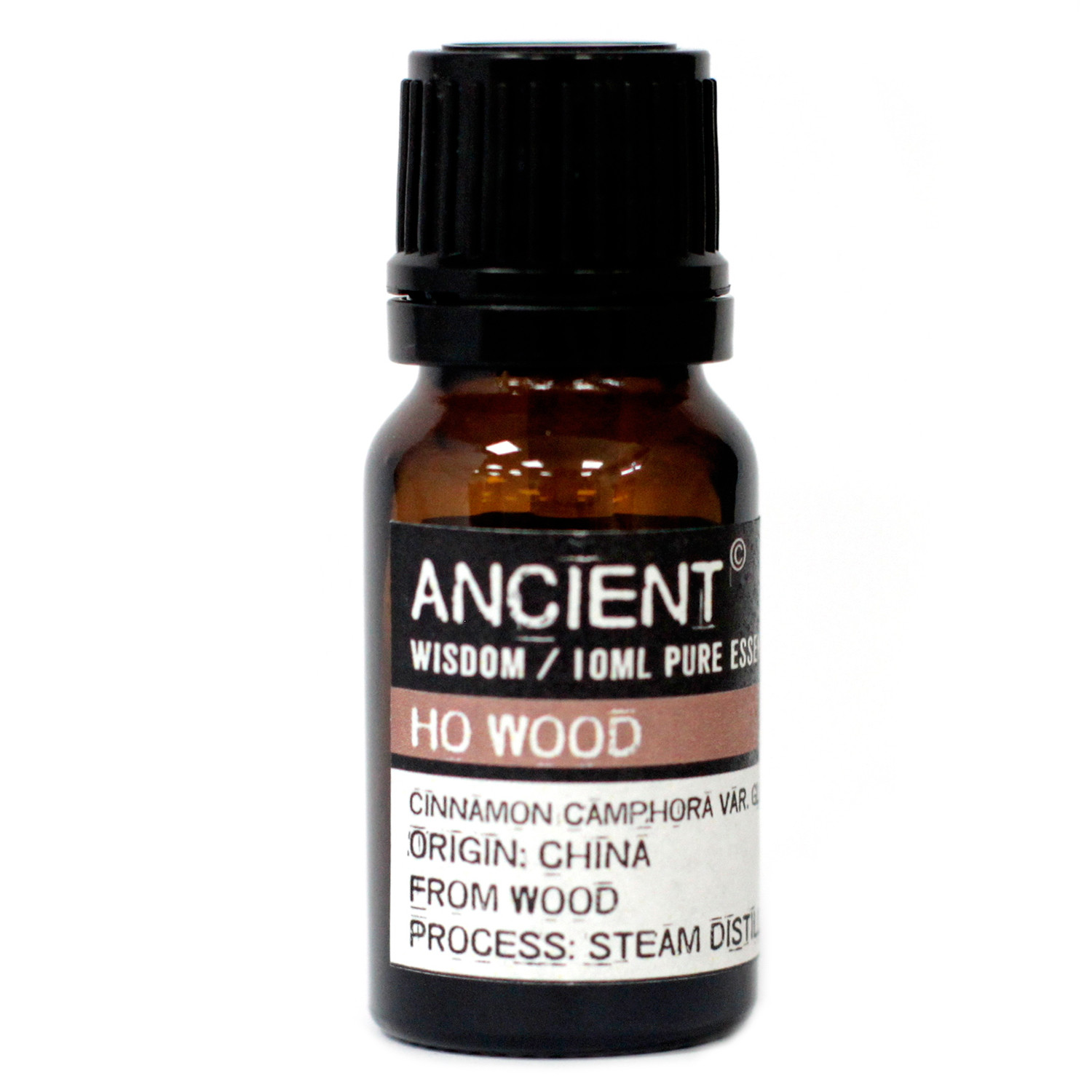












Reviews
There are no reviews yet.